Chains of Freedom Review
When this game came up in my list of upcoming releases, it immediately caught my eye. Tactical combat? Check. Decent looking? Check. Turn-based? Check. So, I had to give it a try.
The Beginnings
Chains of Freedom takes place in a chaotic future in a fictional, dystopian Eastern European state. You lead a small commando squad, trying to uncover what’s going on with mind-control experiments. The world has turned into chaos and several factions. This takes place in The Sovereignty a fictional, quasi–Eastern European nation devastated years ago by a mysterious disease called EDEN. Survivors were often left with mutated—crystalline growths, shattered minds. A breakthrough immunization halted the outbreak and led to the discovery of biocrystals, strange remnants that grant powerful, sometimes terrifying abilities. Peace was restored, but not all accept the new order. Now, the Sovereignty’s Peacekeepers are tasked with keeping rebellion in check. At least, that’s the official story…
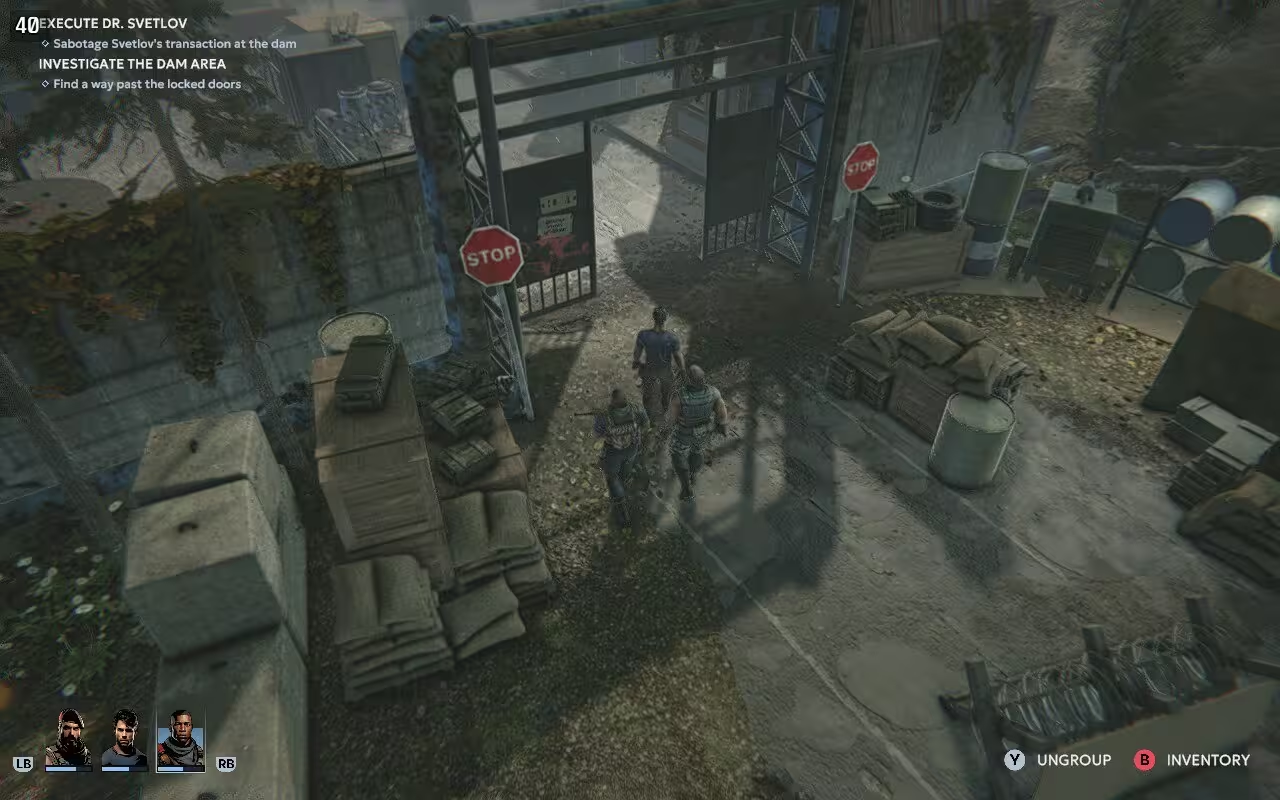
You play the role of such peacekeepers, going around to restore order in areas in trouble. You will end up confronting many different types of outlaws - but what they all have in common is that they are not up for a conversation. Expect things to escalate very quickly.
Exploration and Combat
In Chains of Freedom, you alternate between two phases: first, you explore your surroundings just like you would in a top-view RPG, while there is not much to interact with. Most of the gameplay here is about finding items to loot, and the right path to reach your next objective. Sometimes, you have mini-puzzles to solve in order to progress, such as finding a key to unlock an entrance, and so on. Nothing too surprising, and you can expect some amount of backtracking on the map.
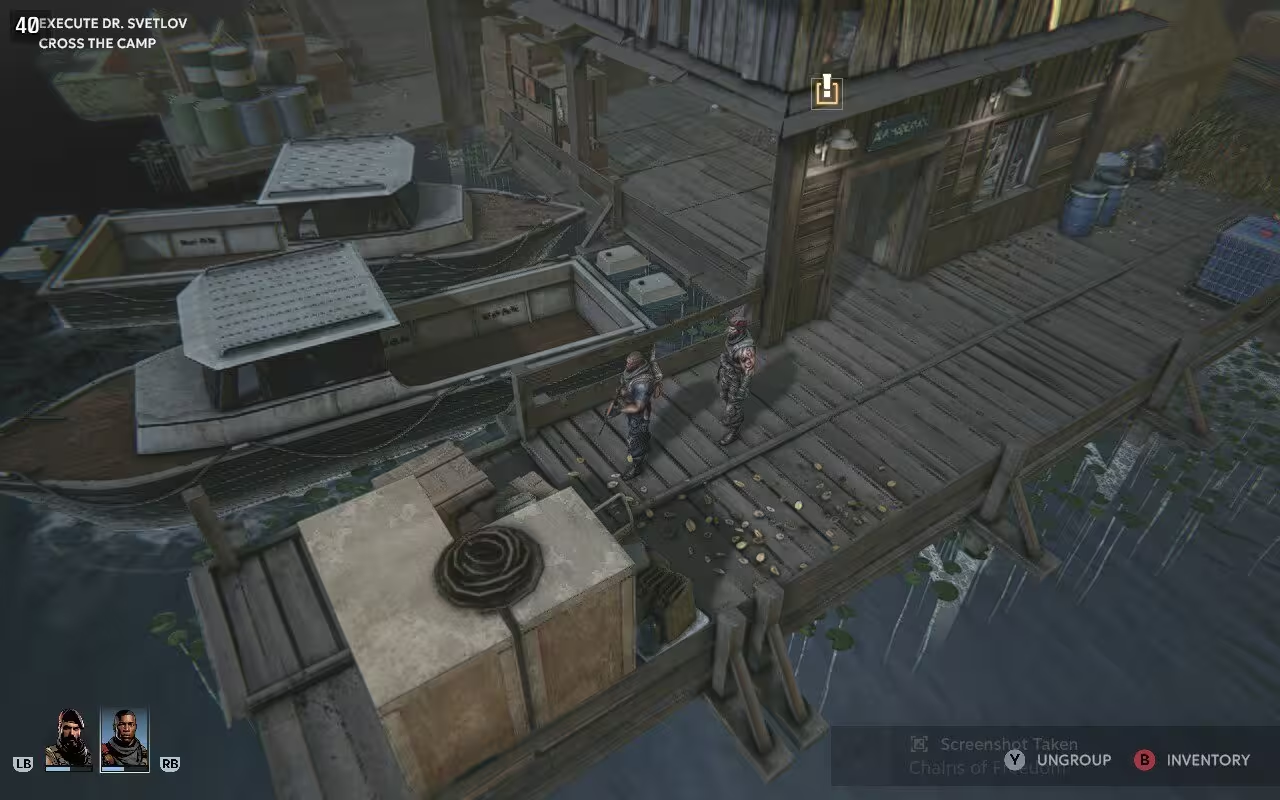
As you move around, your characters (usually in small group) will make remarks about what’s going on, and you often get some small cutscenes (with the same point of view) with a more important piece of story that the game wants you to pay attention to.
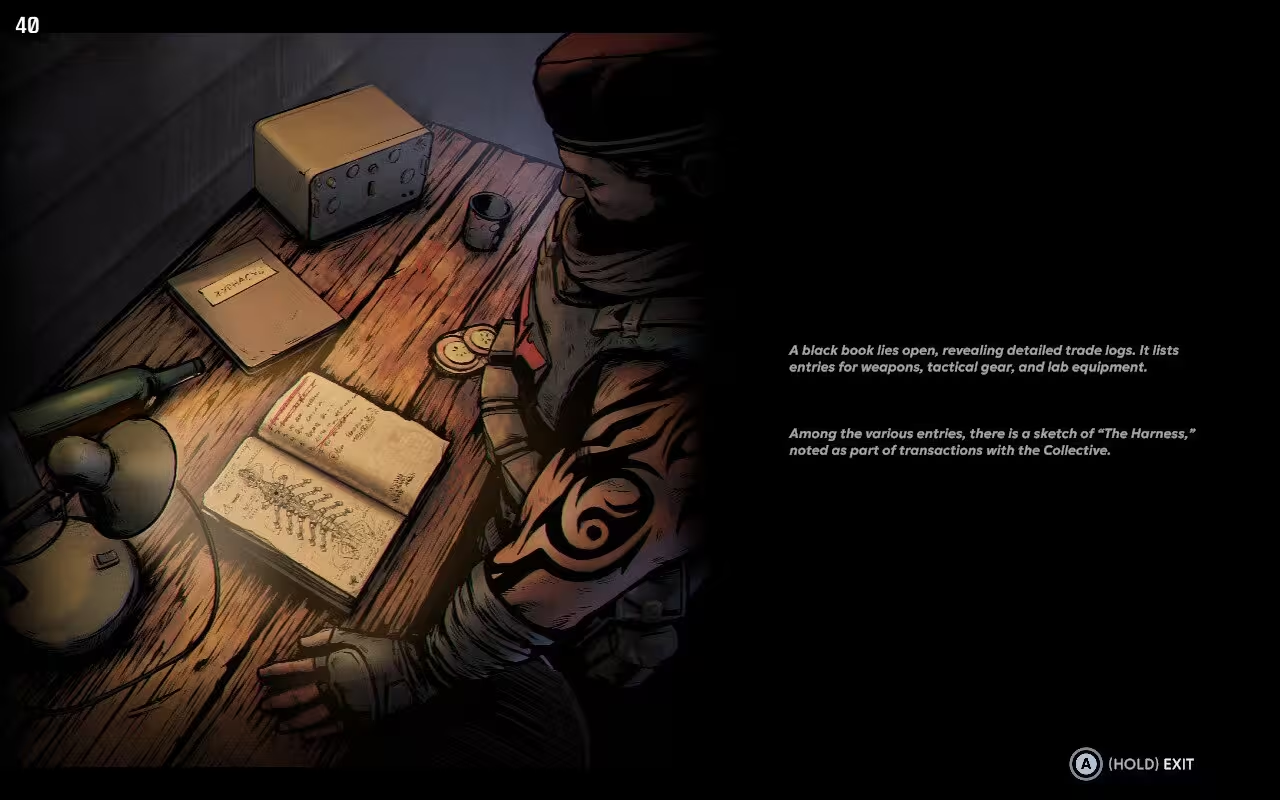
The exploration is actually very important. If you rush your way thru the next endpoint, you are likely to miss out on relevant items, and get massacred in your next fight. Some of the items you find are critical, such as ammunition, biocrystals (to boost your characters), rations and bandages, and scraps that you can use to craft new objects.
The second phase is combat. Once you encounter enemies, you start the combat phase. This is by far the most elaborate part of the game. You can immediately see that the developers put a lot of thought in it. Even before the combat starts, if you crew is undetected, you are able to move around stealthily and split your team into individual members who can take different positions. Let’s say you have one guy hiding behind a box, another one taking a higher position, and some other guy covering the zone from the back. There is no fog of war, you can directly see where each enemy is and where they are patrolling, so the trick is finding the best layout to give you an edge.
This is extremely important to tackle situations where you are outnumbered (this is often the case) and need to make your first shots as deadly as possible. Your enemies have lines of sight, and if you get detected as you move around with each member, they will have the chance to do the first strike. If you manage to stay undetected, you can decide when to shoot first, finding the right moment to maximize the number of enemies you can attack at once.
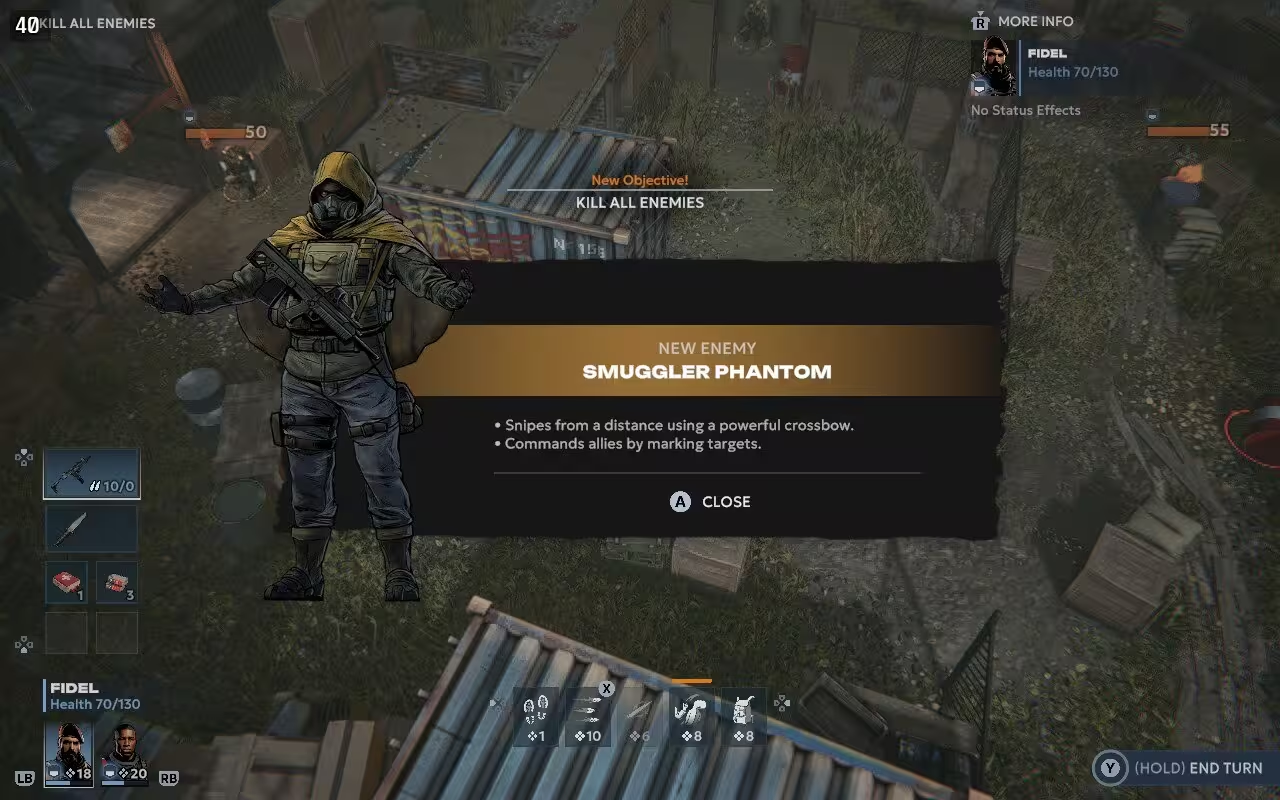
Once the combat starts, you are in turn-based mode, and each turn is by team. Your team goes first, and then the enemy. For each of your characters you have a given set of AP (action points) that can you can use for different actions: moving to a better spot for cover, firing shots at an enemy, using an item, reloading a weapon, throwing a grenade… you can do several actions in a row as long as you still have some action points left. You can also spend extra APs to focus your shot. There’s also an overwatch mode available (in certain conditions) where your character in that mode will systematically shoot whoever comes in sight during the enemy’s turn.
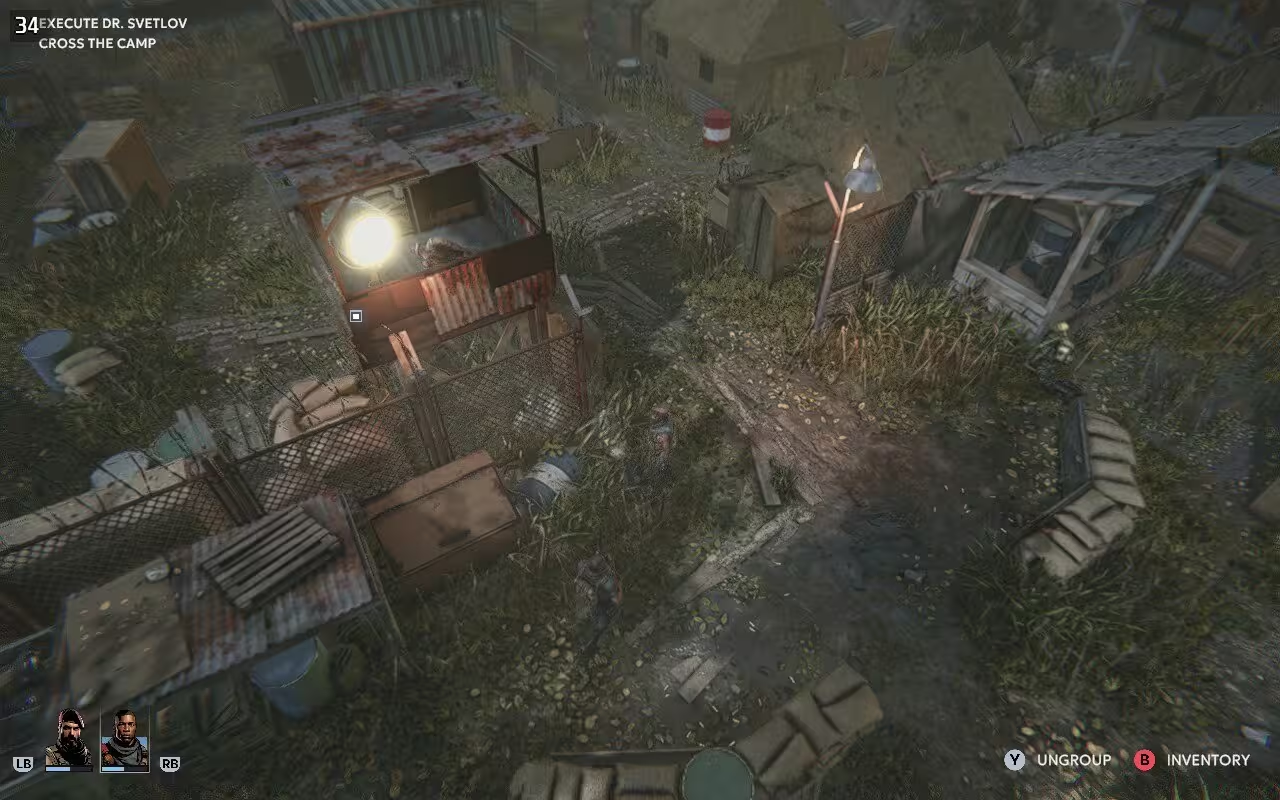
The game surface is not divided in hexagons or squares, instead it’s free ranging and you can move at the exact spot that you want. As you select a new place to go, the game will give you a hint as to which enemies you will be able to target from such a position, which is great, UI-wise.
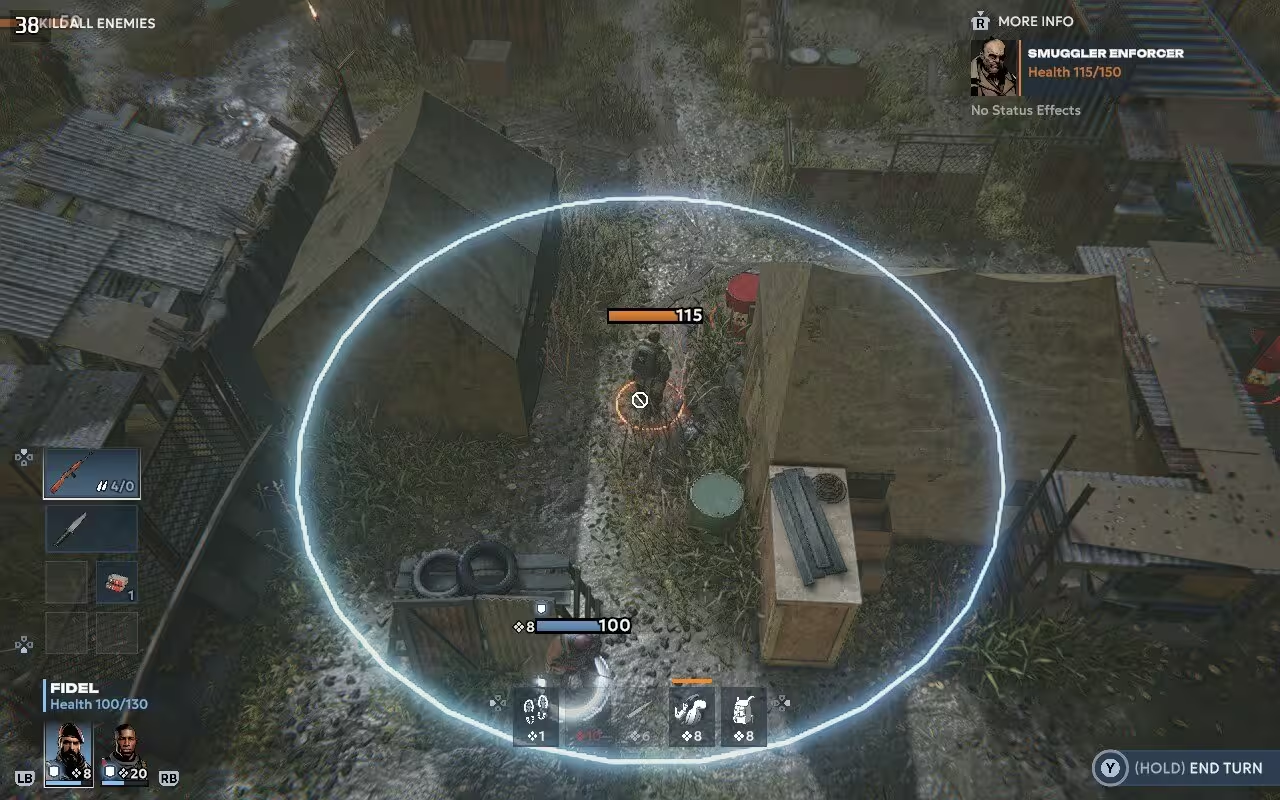
The same goes for cover spots, with the UI giving you a hint on how well protected you will be in every spot you select. Early in the game you will also find a grapple that will enable one of your teammates to jump to higher platforms (like on top of a building), which gives you new options to take an extra advantage on your adversaries.
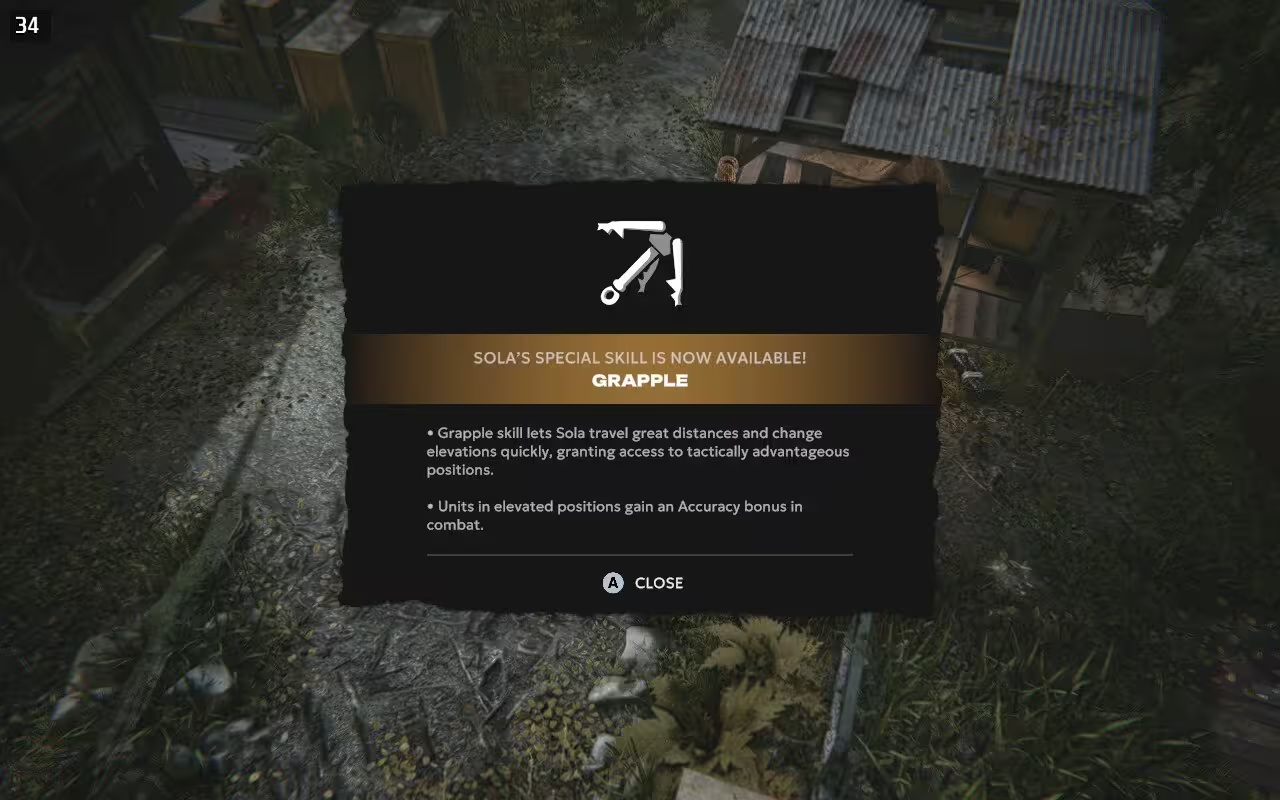
Of course not every one of your shoots will land, but it feels much less unfair than XCOM2 where a 90% chance to hit shot misses three times in a row (seriously!). What’s also cool is some enemies will panic under fire, and make bad decisions. Sometimes enemies get enraged and will go completely crazy and start shooting at their own colleagues, which is great for you when it happens.
A good tactic is usually to make things explode, since you can engulf several enemies in a fire, and cause them to burn for several turns, losing health progressively. But Chains of Freedom gives you this option too often by spreading inflammable barrels exactly where the enemies are located, which is a stupid trope that game devs should really stop doing. Nobody sleeps next to an explosive substance. It’s fun when it happens once, but once you get the same red barrels in every map, I know what you guys are doing…
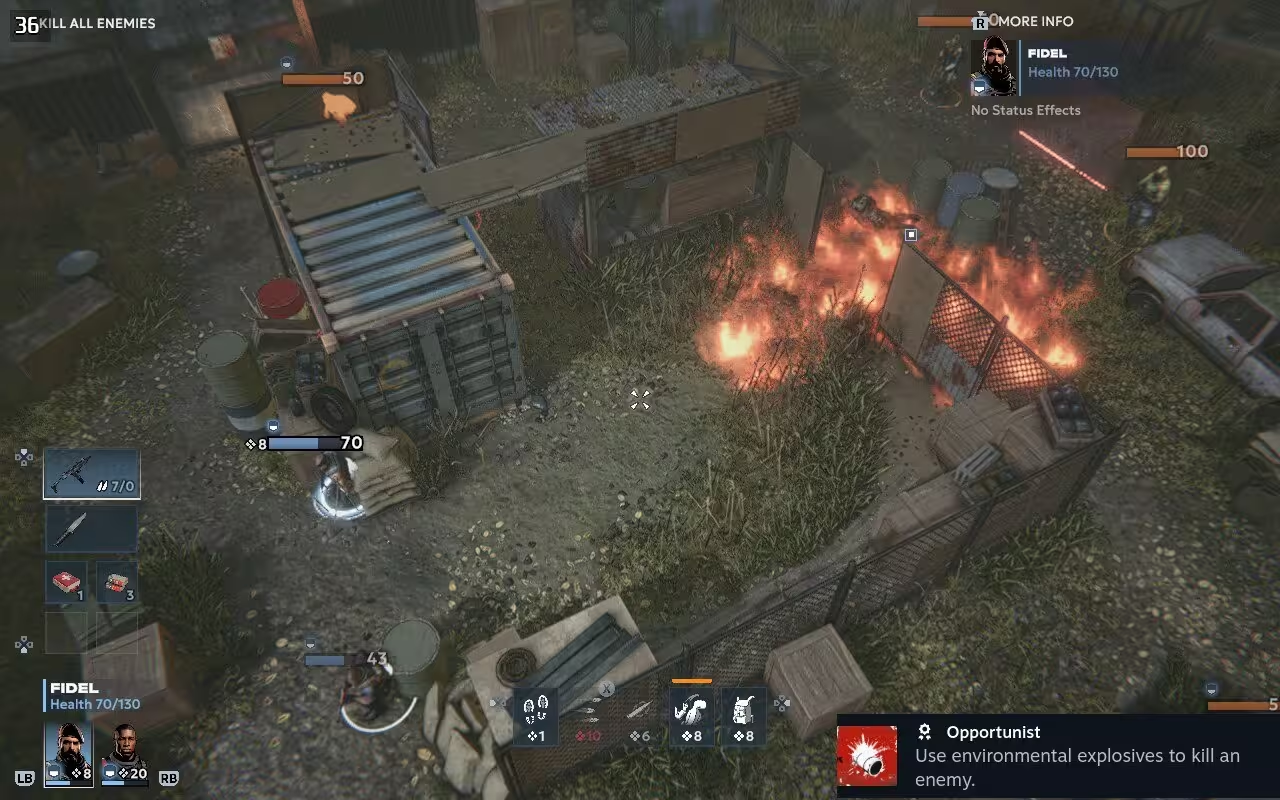
Since you are playing against the computer, you need to know if the game AI is decent. It’s OK. There are sometimes strange decisions that the AI is doing (there’s fire in front and the AI makes the character go through it!), but in other times they take proper cover, and try to flank you, and throw grenades as well. You probably don’t want it to be too smart either, since you are often in a situation where you are outnumbered.
You get boss fights where the main villain is a bullet sponge, and you need to survive as long as possible to finish them. I’m not too fond of that kind of things, but well… it goes with the genre.
Overall, the combat is really fun and challenging. You sometimes get into three ways fights, where two rebel factions are already fighting each other and you land in the middle of the party, not knowing what your best course of action is: let them fight first and get rid of the survivors after? Take one side or the other? Shoot at both at the same time?
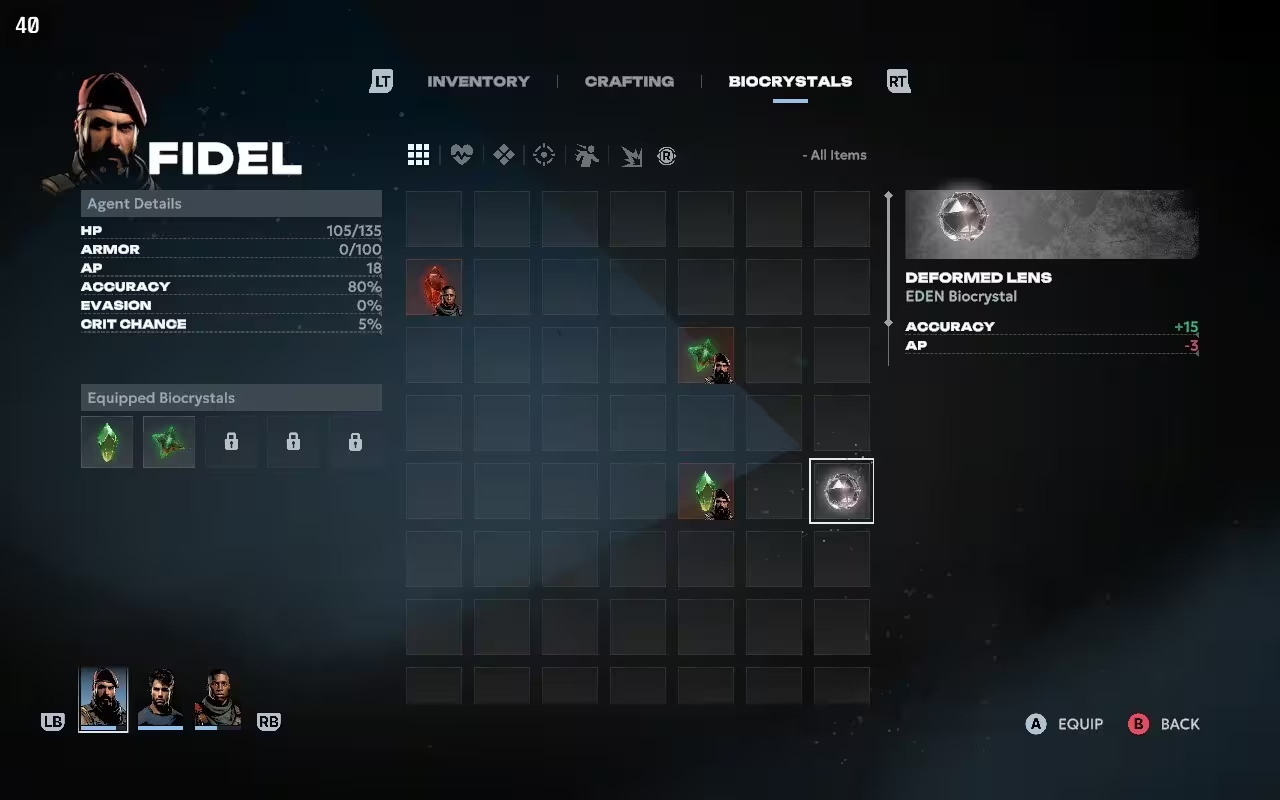
Your inventory lets you access and equip biocrystals that you find during the exploration phase, and these crystals can give you some well needed boosts during combat: more AP, healing capabilities, more armor, etc… You have limited slots to equip them, so this becomes another element of strategy to take in account.
While the combat system is working well as a whole, the UI to select your next action is far from intuitive. They decided to split everything in individual icons, where a tree-based menu approach would have worked much better (and is pretty much the standard in such games). Not sure why they had to reivent the wheel here, for no added benefit and in the end extra friction.
The Chains of the game
So as you can see from the above, the combat system is quite elaborate and well designed. It’s the heart of the game and it stands on its own. However, the whole package besides the combat is actually average or sub-par.
The story is kind of boring, the pace and rythm is too slow, the voice-acting is done on the cheap (someone used Fiverr?) and the graphics smell of asset re-use everywhere. There is no good graphic design. Characters have no distinctive traits. It does not look bad per se, but it looks VERY generic. The soundtrack is almost inexistant. And I can’t stress enough how important this is. You have a game that revolves around action battles, and you don’t even have a proper battle soundtrack? That seems like a big oversight. What were they thinking? Every successful turn-based game out there puts a huge accent on music and sound effects.
There are games where the story and narration carry the gameplay, and this is not one of them. You just don’t connect with any of the characters or whatever is going on. This is where XCOM2 shines for example, since you are more invested in the characters that you level up time after time and fear for their lives as they go on the battlefield. XCOM also gives you a more interesting frame to work with, with a threat to humanity as a whole - with you in charge to reverse the tide. Not every game needs to be about saving the world, but I expect the every tiny bit of story to be engaging. Here, too often Chains of Freedom sends you one wave of ennemies after another without a good reason, and that feels like lazy writing.
Right now, on Chains of Freedom, what makes me come back is the excellent combat system. It’s that good that it can help me forget the blandness of the rest. Now if the devs read this: guys, you are on the right track, you have a very strong basis to make a better (next) game from there on. Just hire a much better writer, and a good lead artist as well, and spend some more money on the production (cheap voice-over is worse than no voice-over), and you may have a winner for your next title. I know, easier said that done, but fundamentally it’s not impossible to pull. If the core of your game is already good, the rest can be done, it’s known territory.
Steam Deck: Verified
The game is Verified for the Steam Deck and I can confirm it works very well on it. The text is just at the right size, and the controls work well on the Deck. Performance wise, you can get decent framerates (in the 40 FPS) with a TDP around 8W, which will help extend your battery life a little. I played most of the game on the Steam Deck so far and it never felt like a problem, on the contrary.
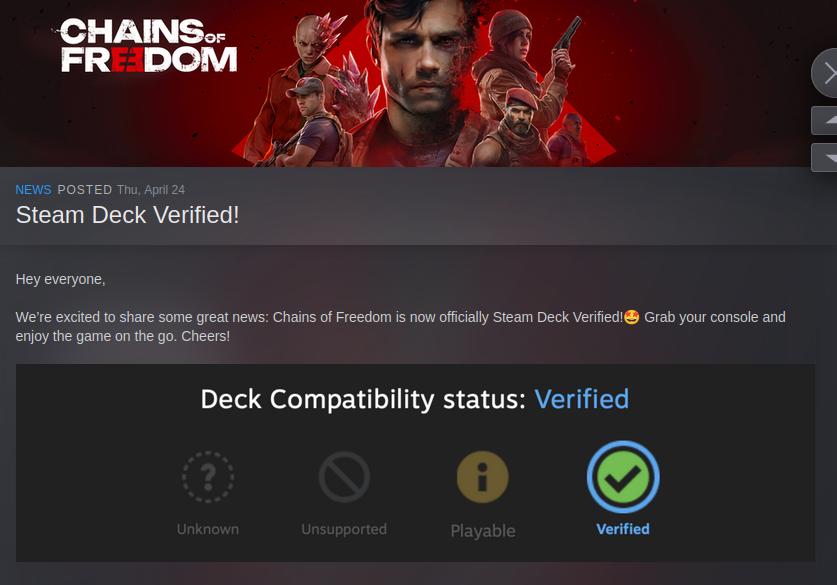
On the Lookout
So there you have it. Chains of Freedom is a decent title if you are waiting for something new to chew on when it comes to tactical turn-based combat, as long as you are aware of all the problems mentioned above. It’s priced about right at 25 USD, while it will probably do better when it goes on sale. If you are new to the genre, there are better titles to start with out there. If the devs keep at it and improve on the execution in their next titles, they may have a serious contender in the genre.
Note: we have received a key from the publisher to review this game.
